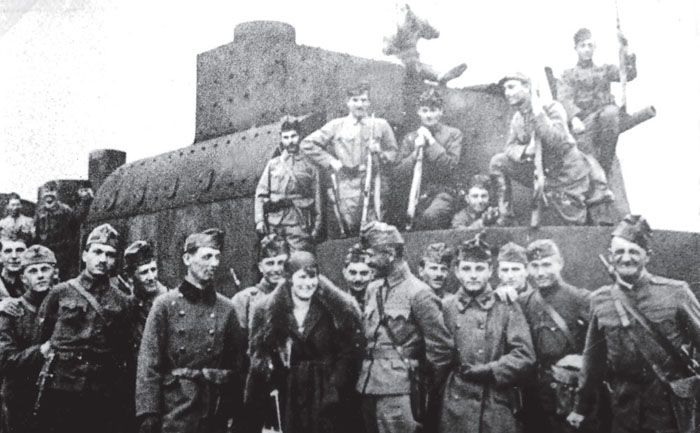
On 16 November 1918 the Kingdom of Hungary became the Democratic Republic of Hungary, and very quickly the new state lost border regions populated by non-Hungarian ethnic minorities. In April 1919 the government handed over power to Belá Kun who founded the short-lived Hungarian Soviet Republic, which was crushed on 3 August by the Czechs and Romanians. The country became a kingdom once more under the Regency of Admiral Horthy, who set about regaining the lost territories, a project which came to an end in 1945.
Austro-Hungarian armoured trains1 IV, VI, VII and IX were stationed on Hungarian territory in 1918. They were renumbered I, II, III and IV respectively. Four new trains, numbered V to VIII, were built between December 1918 and January 1919. Due to the continuing fighting on the new frontiers of the country, six additional trains to be numbered IX to XIV were ordered from MÁVAG,2 but the last two were never completed. The Communist regime intended to allocate these two trains, XIII and XIV, to the Red Railway Regiment, and a further five trains ordered in June 1919 were to be manned by the Hungarian Red Army. With the collapse of the regime, construction of these never even began.
On 12 June 1920 the new Hungarian Army reclassified the armoured trains as ‘military surveillance trains’,3 and distributed them across the country.4 In 1929, the four trains considered as worn out were broken up, and the four best trains, Nos I, II, III and V, were modernised. In 1938 smoke diverters were fitted on the engines, and turrets were mounted on the armoured wagons. Roman numbering was replaced by Arabic numerals. An armoured trolley, Type RÁBA Vp, was also put into service between 1932 and 1939. In the latter year, the trains were renumbered from 101 to 104, and came under the direct control of the Army High Command.
The four modernised trains went into action against Slovakia in March-April 1939, and took part in the reoccupation of Ruthenia5 in March. In 1940 they were used in the invasion of Transylvania and then in 1941 against Yugoslavia. They then took part in the invasion of the USSR, and finished the war on Hungarian territory. On the Eastern Front, anti-aircraft wagons with minimal protection were added to the trains.

Artillery wagon of the former Austro-Hungarian PZ IV or VI in use by the Hungarian Army in 1919.
(Photo: All Rights Reserved)
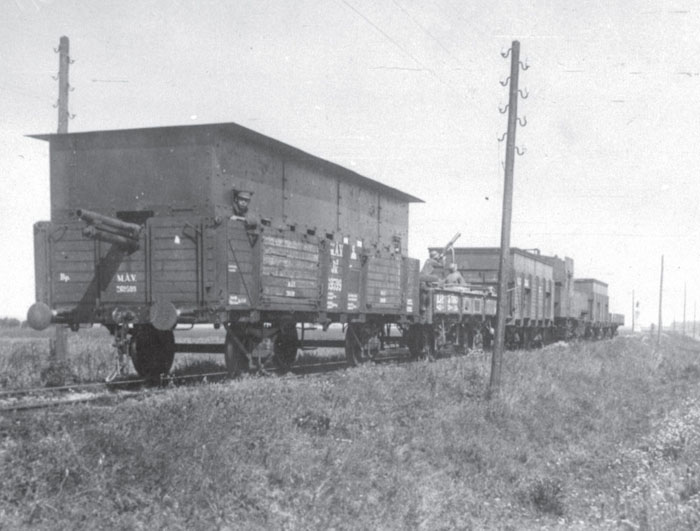
Armoured Train XII.
(Photo: Magyar Műszaki és Közlekedési Múzeum)
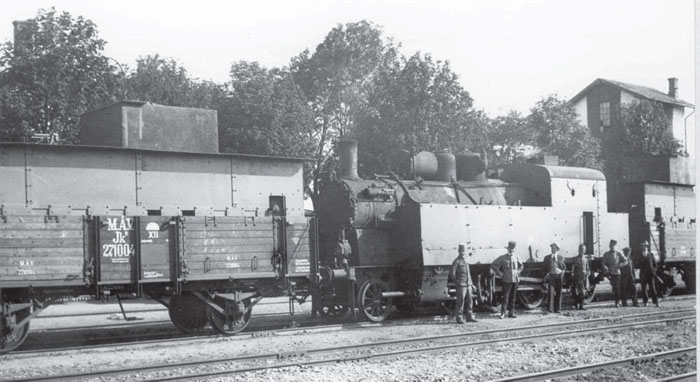
The engine of PV XII has only partial armour protection.
(Photo: Magyar Műszaki és Közlekedési Múzeum)
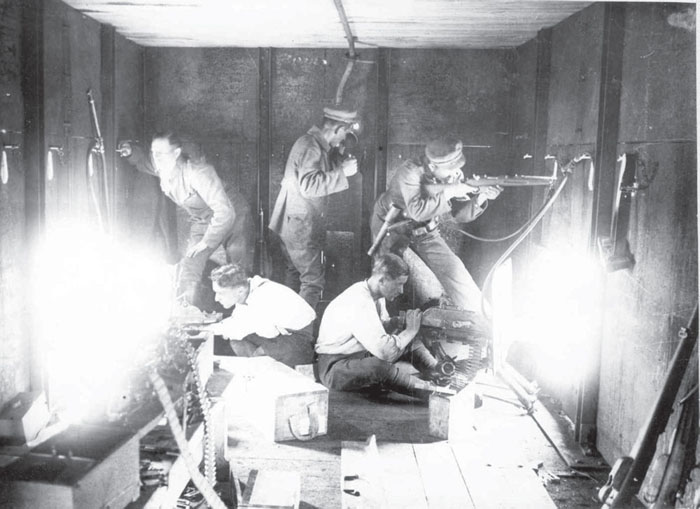
Interior shot of a Hungarian armoured wagon during the period of Communist rule. The armour protection extends down to the floor. Despite the spartan interior, note the communication system using voice tubes. The machine guns are Schwarzlose.
(Photo: Magyar Műszaki és Közlekedési Múzeum)
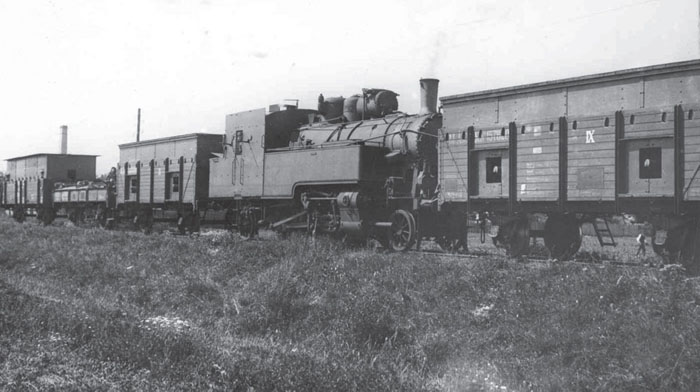
Armoured Train IX of the Red (Hungarian) Army in 1919, with its anti-aircraft flat wagon sandwiched between two armoured wagons. On this train, the machine guns fired through gunports in the wagons in front of and behind the engine, but the crew of the end wagon were limited to using rifles and pistols.
(Photo: Magyar Műszaki és Közlekedési Múzeum)
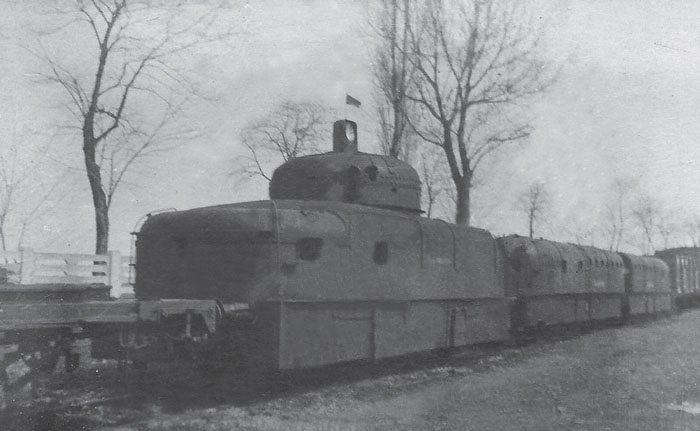
Austro-Hungarian PZ IX left in Hungary, seen in 1920 prior to being modernised. The two low-roof wagons would go to make up PV 102, and the powered railcar would go to PV 104.
(Photo: Paul Malmassari Collection)

8cm forward turret of the type originally mounted on the river patrol boat Gyór.
(Photo: http://militaryhistory.x10.mx)
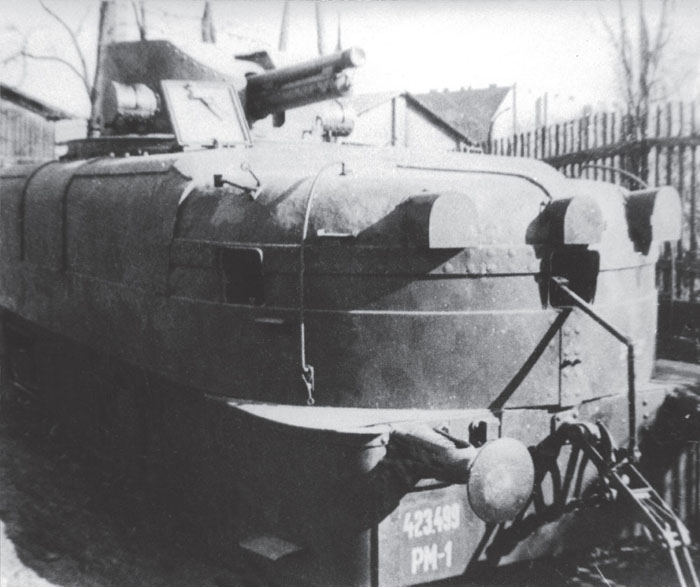
PV 104 (ex-kkStB 303-343). In the 1930s, the turret was replaced by one taken from the Danube armoured river patrol boat Gyór, when that vessel was rearmed with modern Bofors anti-aircraft weapons. Note the ‘combat-type’ coupling, which can be released from inside the hull.
(Photo: Paul Malmassari Collection)
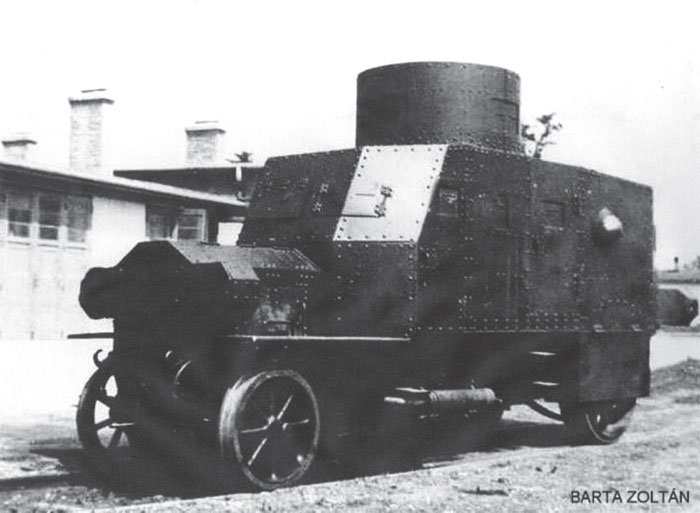
Type RÁBA Vp armoured trolley, also designated a ‘lightweight armoured train’. It does not appear to have been fitted with specific rail buffers or coupling gear.
(Photo: Barta Zoltan)
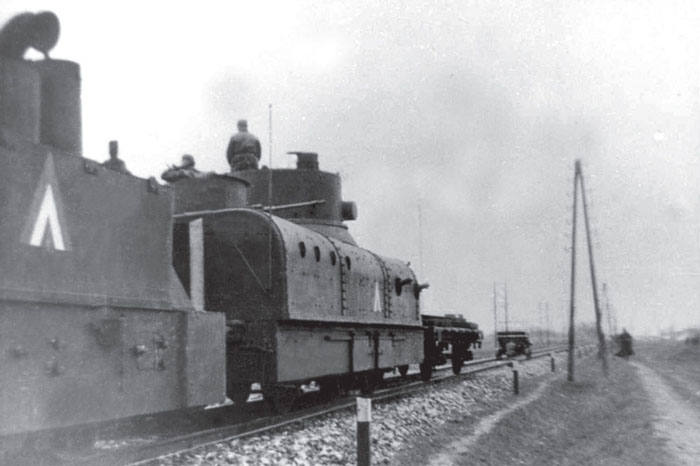
PV 102 seen in 1938, with engine MAV 377, and preceded by a lightweight trolley. Somewhat surprisingly, the national insignia is that used by the Hungarian Air Force between 1938 and 1941 (the colours being a green triangle then a white chevron and on the outside a red chevron), and in particular during the attack on Slovakia. Both 7cm guns taken from the Gyór7 are now fitted to the reduced-height wagons of the former Austro-Hungarian PZ IX.
(Photo: Magyar Műszaki és Közlekedési Múzeum)
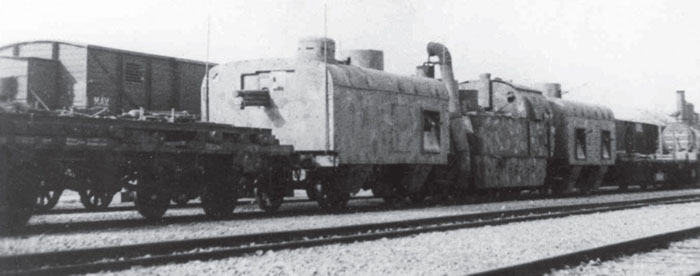
This photograph of either PV 101 or 103 shows the modifications to the shape of the roof on the artillery wagon. The lateral machine guns by this date would be the locally-manufactured 8mm Gebauer Type 34.AM.
(Photo: Magyar Műszaki és Közlekedési Múzeum)
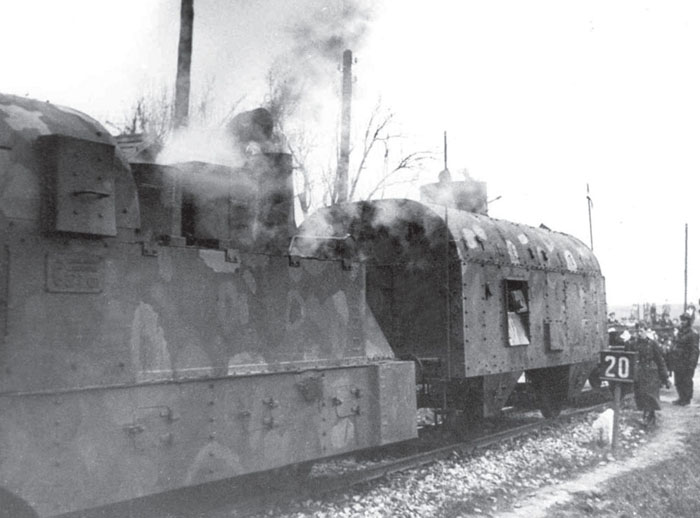
Engine MAV 377 of PV 101 seen at Roznyo in 1938.
(Photo: Magyar Műszaki és Közlekedési Múzeum)
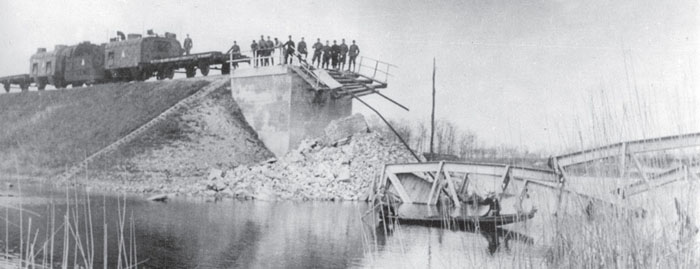
In the Autumn of 1941, during the occupation of the Bačka region which Hungary had claimed since 1918, PV 101 or 103 was halted by the demolition of the Ba ko Gradište Bridge by the retreating Yugoslav Army.
(Photo: Muzej Vojvodine)
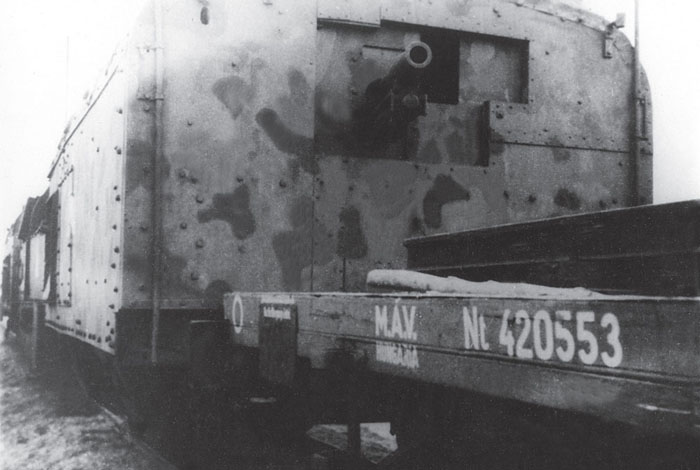
Closeup of the gun in the leading wagon of either PV 101 or 103. Note the cutout in the armour mantle which allows the gunsight to follow the movement of the 7.5cm F.K. Model 08.
(Photo: Muzej Vojvodine)
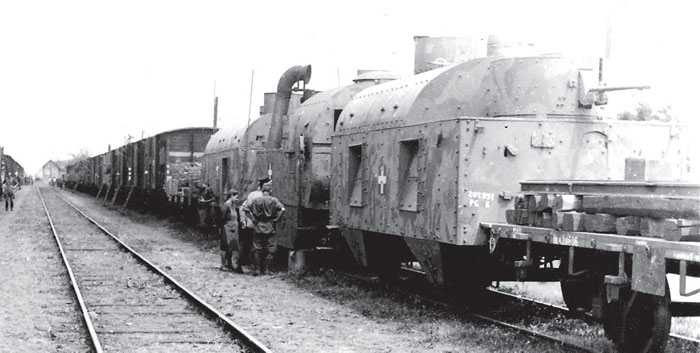
The modernised wagons of PV 101 or PV 103. A turret armed with a 20mm Model 36 M has been installed on top of the roof, and a second 20mm Model 36 M is in a turret fitted at a lower level, the roof having been cut back. The smoke diverter was installed in 1938, and the Hungarian national insignia is now the white cross on a black square, which first appeared in late 1942.
(Photo: Paul Malmassari Collection)

A captured Soviet armoured wagon included in a Hungarian train.
(Photo: FORTEPAN)
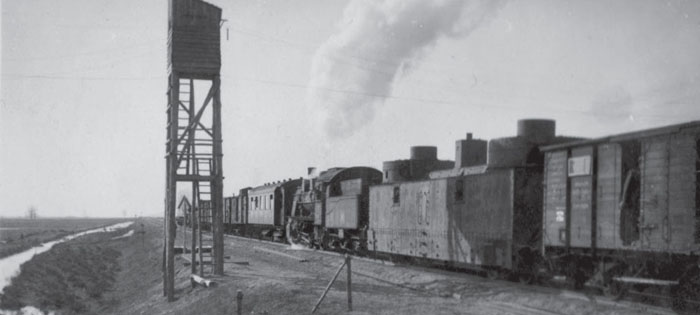
Armoured train Botund with its mixture of different types of wagon.
(Photo: Hadtörténeti Intézey és Muzeum)
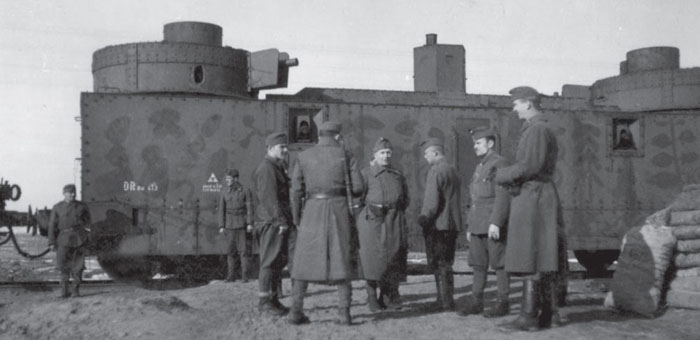
The artillery wagon of Botund on which is clearly visible the marking ‘DR’ denoting its previous inclusion in a Soviet armoured train, perhaps the Leutnant Marx of the 221st Security Division.
(Photo: Hadtörténeti Intézey és Muzeum)
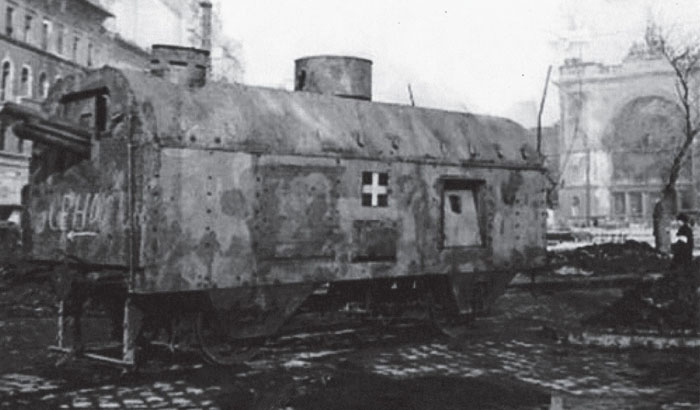
Artillery wagon from PV 103 abandoned in Budapest (note the damaged observation cupola) in front of the arched entrance to the Eastern Railway Station. Note also the markings in Cyrillic letters added by the Soviets who had taken the city on 13 February 1945.
(Photo: All Rights Reserved)
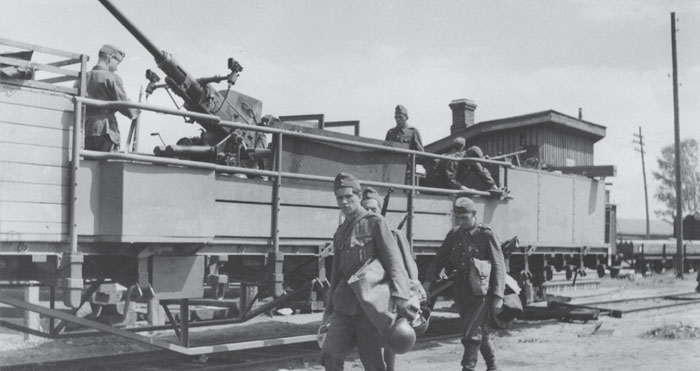
An anti-aircraft wagon seen in 1943, armed with a 40mm Bofors.
(Photo: Paul Malmassari Collection)
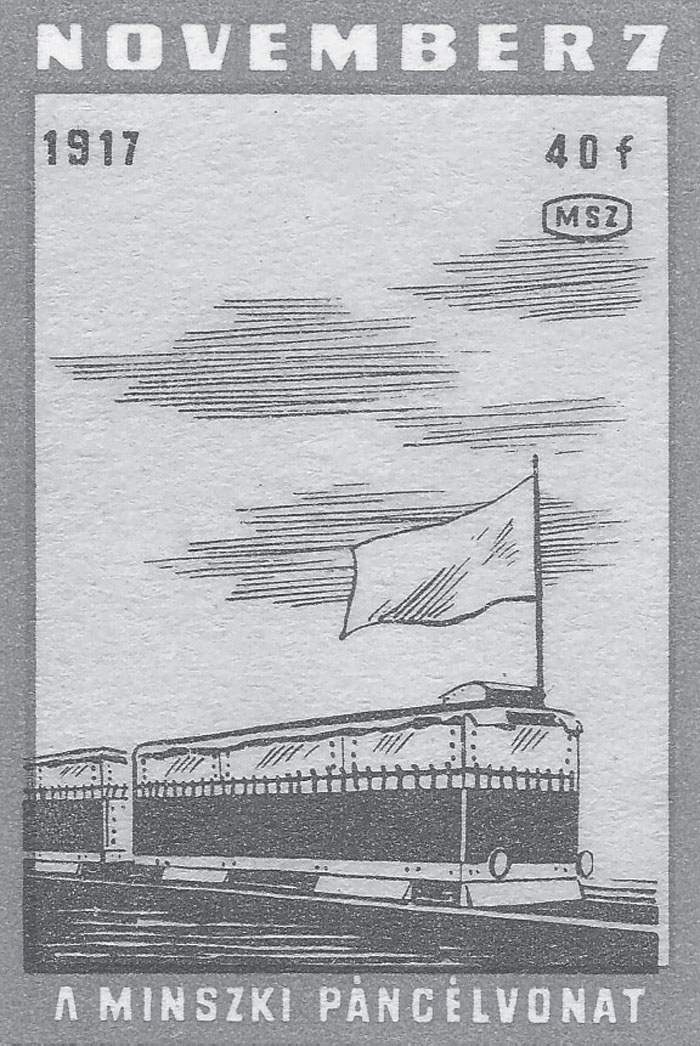
The final illustration shows a 40-florin stamp commemorating the armoured trains of the Bolshevik Revolution, dated 7 November 1917 in the Julian Calendar (25 October for the countries using the Gregorian Calendar).
(Paul Malmassari Collection)
SOURCES:
Archive:
SHD: Box 7 N 2893.
Book:
Bonhardt, Attila, A Magyar Királyi Honvédség fegyverzete 1919-1939 (Budapest: Zrínyi Katonai Könyvkiadó, 1992).
Journal article:
Villanyi, György, ‘Magyar páncélvonatok’, Haditechnika 1994/1, pp 69–71; 1994/ 2, pp 48–52.
1. In Hungarian: ‘Páncélvonat’, PV.
2. MÁVAG = Magyar Királyi Államvasutak Gépgyára, the Royal State Railway Manufacturers, Steelworks and Foundries.
3. Katonai Örvonot.
4. On that date, the crews of the ten armoured trains totalled 41 officers and 662 men.
5. The eastern part of Czechoslovakia.
7. The armoured river patrol boat Györ was originally armed with two single turrets with 8cm guns (actual calibre 76.5mm).